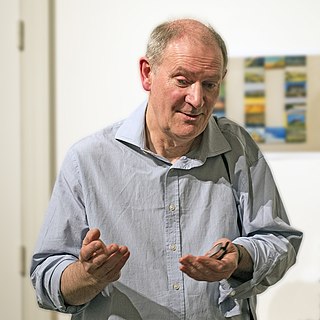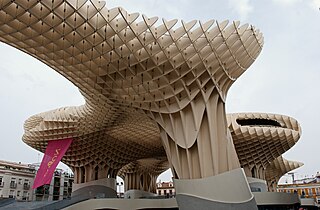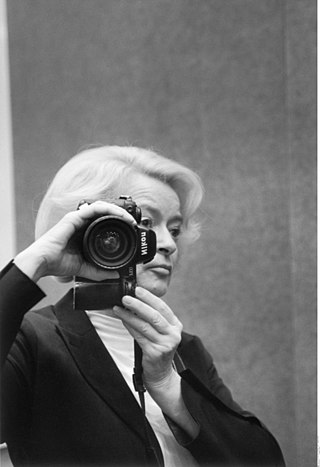Related Research Articles

Wolfgang Tillmans is a German photographer. His diverse body of work is distinguished by observation of his surroundings and an ongoing investigation of the photographic medium’s foundations.

Andreas Gursky is a German photographer and professor at the Kunstakademie Düsseldorf, Germany.

Thomas Wood is an Irish street photographer, portraitist and landscape photographer, based in Britain. Wood is best known for his photographs in Liverpool and Merseyside from 1978 to 2001, "on the streets, in pubs and clubs, markets, workplaces, parks and football grounds" of "strangers, mixed with neighbours, family and friends." His work has been published in several books, been widely shown in solo exhibitions and received awards.
Jacqueline Hassink was a Dutch visual artist based in New York City.
Douglas Kolk was an American artist based in Boston, Massachusetts. He is known primarily for his drawing, as well as work in collage and mixed media.
Raїssa Venables is an American photographer.

Nadav Kander HonFRPS is a London-based photographer, artist and director, known for his portraiture and landscapes. Kander has produced a number of books and had his work exhibited widely. He received an Honorary Fellowship from the Royal Photographic Society in 2015, and won the Prix Pictet award.

Julian Rosefeldt is a German artist and filmmaker. Rosefeldt's work consists primarily of elaborate, visually opulent film and video installations, often shown as panoramic multi-channel projections. His installations range in style from documentary to theatrical narrative.
Stuart Franklin is a British photographer. He is a member of Magnum Photos and was its President from 2006 to 2009.

Sibylle Bergemann was a German photographer. In 1990, she co-founded the Ostkreuz photographers agency. She is remembered for documenting developments in East Berlin during the Communist era and for her international assignments for Stern and later for Geo.

Ragnar Kjartansson is a contemporary Icelandic artist who engages multiple artistic mediums throughout his performative practice. His video installations, performances, drawings, and paintings incorporate the history of film, music, visual culture, and literature. His works are connected through their pathos and humor, with each deeply influenced by the comedy and tragedy of classical theater. Kjartansson's use of durational, repetitive performance to harness collective emotion is a hallmark of his practice and recurs throughout his work.

Jürgen Hermann Mayer is a German architect and artist. He is the leader of the architecture firm "J. MAYER H." in Berlin and calls himself Jürgen Mayer H.

Oliver Mark is a German photographer and artist known primarily for his portraits of international celebrities.

Walter Niedermayr is an Italian photographer.
Michael Reisch is a German artist and photographer. Reisch exhibited nationally and internationally. His works are included in collections worldwide, including the Los Angeles County Museum of Art, USA and National Gallery of Scotland Edinburgh, Scotland. His works combine aspects of documentary photography, painting and sculpture. He lives in Düsseldorf.
Stefan Heyne is a German photographer and stage designer. He lives and works in Berlin.
Martin Roemers is a Dutch photographer and artist.

Angelika Platen is a German photographer known internationally for her portraits of artists.

The Kunstmuseum Wolfsburg is an art museum in central Wolfsburg, Lower Saxony, opened 1994. It presents modern and contemporary art and is financed by the Kunststiftung Volkswagen.
Arwed Messmer is a German photographer and artist, based in Berlin. His work primarily uses recontextualised vernacular photographs of recent historical events, found in German state archives, in order to pose questions about photography. He mainly produces books of this work, often with Annett Gröschner on the time of a divided Germany, but also exhibits it.
References
- ↑ "Tom Hunter". The Daily Telegraph. 10 September 2010. ISSN 0307-1235 . Retrieved 16 February 2019– via www.telegraph.co.uk.
- 1 2 3 4 Photographer Tom Hunter's best shot, The Guardian, 4 November 2009
- 1 2 3 4 5 Adams, Tim (11 December 2005). "The face is familiar ..." The Guardian . Retrieved 14 October 2018.
- ↑ Life through a lens, Royal College of Art biography
- ↑ From High Art to High Rise: Making Modern Masterpieces Archived 2007-06-08 at the Wayback Machine , National Gallery
- ↑ Tom Hunter: A Palace for Us – review, The Guardian, 9 December 2010
- ↑ "You talkin' to me? The taxi drivers of Hastings – in pictures". The Guardian. 8 January 2019. ISSN 0261-3077 . Retrieved 16 February 2019– via www.theguardian.com.
- 1 2 "Tom Hunter / A Journey Home 09 February 2019 - 02 June 2019". Hastings Museum and Art Gallery. Retrieved 16 February 2019.
- ↑ "Tom Hunter - MoMA". The Museum of Modern Art. Retrieved 18 May 2023.